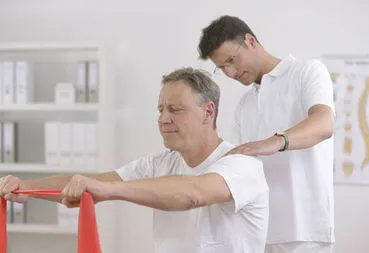
- Share on Facebook73
- Share on Pinterest
- Share on Twitter
For many of us, frequent headaches can be extremely detrimental in more than just a physical sense. They can interfere with our enjoyment of life, the quality of our work, and the amount of energy we are able to dedicate to interpersonal relationships.
According to the World Health Organization (WHO), 47 percent of adults worldwide have had at least one headache in the last year. Some headaches are caused by triggers such as unhealthy foods, and others can signify an underlying health condition.
The American Chiropractic Association states that 95 percent of headaches are what are known as primary headaches. This means that they are not caused by an underlying illness, but are themselves the primary problem. These headaches can be tension headaches, cluster headaches or migraines.
Dr. George B. McClelland, a doctor of chiropractic practicing in Christiansburg, Virginia, says, “the greatest majority of primary headaches are associated with muscle tension in the neck. Today, Americans engage in more sedentary activities than they used to, and more hours are spent in one fixed position or posture. This can increase joint irritation and muscle tension in the neck, upper back and scalp, causing your head to ache.”
A number of studies have linked chiropractic adjustments, also known as spinal manipulations, to relief from headaches. One study of individuals with migraines found that of those who received chiropractic treatments, 22 percent reported a 90 percent or more reduction in the number of migraines they experienced. 49 percent of these individuals reported that their migraines were significantly less intense after chiropractic treatments.
Another study examined the effectiveness of spinal manipulation against the daily headache medication, Elavil. Participants were randomly assigned the spinal manipulations, Elavil, or a combination of both to combat their headaches. Results showed that the spinal manipulation worked just as well as Elavil in reducing migraines, with fewer side effects. Combining the two treatments did not increase the efficacy of either of them.
Those who have never visited a chiropractor may be curious as to what exactly it is that chiropractors do. On a first visit, a chiropractor will usually take your health history, and perform a physical examination of your spine. X-rays will often be taken to determine your spine curvature. They will then go over a treatment plan with you, and explain the details of their individual approach.
 Chiropractic treatments usually involve manual manipulations of the spine, often done by quick, precise motions of the hands, to realign a joint or vertebrae. Other treatment methods that chiropractors typically use include heat and ice treatments, electrical muscle stimulation (which is painless, and not nearly as scary as it sounds!), an exercise plan and counseling about diet and proper posture habits.
Chiropractic treatments usually involve manual manipulations of the spine, often done by quick, precise motions of the hands, to realign a joint or vertebrae. Other treatment methods that chiropractors typically use include heat and ice treatments, electrical muscle stimulation (which is painless, and not nearly as scary as it sounds!), an exercise plan and counseling about diet and proper posture habits.
While chiropractic care is not for everyone, some people may find great relief from headaches, as well as a variety of other health issues, if they see a chiropractor for regular spinal adjustments. If you are curious about giving it a try, your local chiropractor will often sit down with you and explain the ins and outs of their practice free of charge.
-The Alternative Daily
Sources:
http://umm.edu/health/medical/altmed/condition/migraine-headache
http://nccam.nih.gov/health/chiropractic/introduction.htm#hed4
http://www.ncbi.nlm.nih.gov/pubmed/7790794
http://www.ncbi.nlm.nih.gov/pubmed/10714533
http://www.acatoday.org/content_css.cfm?CID=2186
http://www.who.int/mediacentre/factsheets/fs277/en/
- Share on Facebook73
- Share on Pinterest
- Share on Twitter

